Prediction of Squeal Noise Based on Multiresolution Signal Decomposition and Wavelet Representation—Application to FEM Brake Systems Subjected to Friction-Induced Vibration
Abstract
:1. Introduction
2. Preamble
2.1. Finite Element Model of the Brake System under Study
- The four corners of the back plate of the upper pad (pad 1) are connected to a master node which is only allowed to move in the out of plane direction;
- The inner edge of the disc (i.e., cylindrical surface in the Z direction having a radius of 0.034 m) and the back plate of the lower pad (pad 2) are clamped;
- The hydraulic pressure (2 × Pa for the present study) is directly applied on the back plate of the upper pad (pad 1);
- The nonlinearities at the friction interface between the pads and the disc are due to the cubic nonlinear terms with the the possibility of contact/no-contact states, such aswhere defines the normal reaction at the couple of matching nodes on any interface and is the relative normal displacement between one pad and the disc. and are the linear and nonlinear stiffnesses at the friction interfaces (with N·m and N·m). It should be noted that this formulation has been validated by experimental compression tests [23,24];
- The normal reaction forces on each pad is classically modeled by ;
- The friction forces are determined with a classical Coulomb’s law and the friction coefficient at the different contacts between the two pads and the disc masses is supposed to be constant and equal to . It should be noted that the same coefficient of friction is used for the two frictional interfaces for the sake of simplicity;
- The tangential friction forces are related to the normal reaction forces by where defines the local orthoradial in-plane direction (i.e., );
- The structured mesh uses hexahedrons with linear interpolation. The spatial discretization in the Z direction (i.e., thickness of the disc and pads) is of four nodes for the disc and three nodes for each pad. The spatial discretization on the circumference of the disc is of 150 nodes. The full FEM model has a total of around 50,000 degrees of freedom.
- The C&B technique is performed by condensing the internal degrees of freedom of each substructure (i.e., the disc and the two pads) and by keeping the physical degrees of freedom situated at the two frictional interfaces. The number of fixed interface modes is chosen so that the reduced model is valid for a given frequency range of interest (i.e., with kHz in the present case). To reach such an objective, the convergence study is performed on the control parameter , selected for each substructure: the fixed interface modes whose frequencies are less than are kept;
- The DMS technique consists in the condensation of all the degrees of freedom at the two frictional interfaces. The control parameter for the DMS reduction is set by the number of interface modes kept (denoted ).
2.2. Basic Results for the Stability Analysis and the Transient Nonlinear Dynamics
2.3. Prediction of Squeal Noise Based on Acoustic Radiation
3. Approximation of the Acoustic Radiation Based on Multiresolution Signal Decomposition and Convergence Study of Reduced Basis
3.1. On the Use of Windowed Fourier Transform
3.2. Wavelet Transform and Logarithmic Observation Scales
3.3. Extension of the Orthogonal Wavelet Representation to the Two-Dimensional Case
3.4. Application for Squeal Noise and Convergence Results
3.4.1. Preamble: On the Use of the Multiresolution Signal Decompostion for Squeal Noise and Definition of Convergence Criteria
3.4.2. Application and Numerical Results
4. Conclusions
Author Contributions
Funding
Acknowledgments
Conflicts of Interest
References
- Oberst, S.; Lai, J.; Marburg, S. Guidelines for numerical vibration and acoustic analysis of disc brake squeal using simple models of brake systems. J. Sound Vib. 2013, 332, 2284–2299. [Google Scholar] [CrossRef]
- Oberst, S.; Lai, J. Squeal noise in simple numerical brake models. J. Sound Vib. 2015, 352, 129–141. [Google Scholar] [CrossRef]
- Lee, H.; Singh, R. Determination of sound radiation form a simplified disk-brake rotor by a semi-analytical method. Noise Control Eng. J. 2004, 52, 225–239. [Google Scholar] [CrossRef]
- Soobbarayen, K.; Besset, S.; Sinou, J.-J. A simplified approach for the calculation of acoustic emission in the case of friction-induced noise and vibration. Mech. Syst. Signal Process. 2015, 50–51, 732–756. [Google Scholar] [CrossRef] [Green Version]
- Soobbarayen, K.; Besset, S.; Sinou, J.-J. Noise and vibration for a self-excited mechanical system with friction. Appl. Acoust. 2013, 74, 1191–1204. [Google Scholar] [CrossRef] [Green Version]
- Soobbarayen, K.; Sinou, J.-J.; Besset, S. Numerical study of friction-induced instability and acoustic radiation—Effect of ramp loading on the squeal propensity for a simplified brake model. J. Sound Vib. 2014, 333, 5475–5493. [Google Scholar] [CrossRef] [Green Version]
- Sinou, J.-J.; Lenoir, D.; Besset, S.; Gillot, F. Squeal analysis based on the laboratory experimental bench Friction-Induced Vibration and Noise at Ecole Centrale de Lyon. Mech. Syst. Signal Process. 2018, 119, 561–588. [Google Scholar] [CrossRef]
- Lenoir, D.; Besset, S.; Sinou, J.-J. Transient vibro-acoustic analysis of squeal events based on the experimental bench FIVEECL. Appl. Acoust. 2020, 165, 107286. [Google Scholar] [CrossRef]
- Akay, A. Acoustics of friction. J. Acoust. Soc. Am. 2002, 11, 1525–1548. [Google Scholar] [CrossRef]
- Crolla, D.; Lang, A. Brake noise and vibration—State of the art. Tribol. Ser. 1991, 18, 165–174. [Google Scholar]
- Papinniemi, A.; Lai, J.; Zhao, J.; Loader, L. Brake squeal: A literature review. Appl. Acoust. 2002, 63, 391–400. [Google Scholar] [CrossRef]
- Kinkaid, N.; O’Reilly, O.; Papadopoulos, P. Automotive disc brake squeal. J. Sound Vib. 2003, 267, 105–166. [Google Scholar] [CrossRef]
- Ibrahim, R. Friction-induced vibration, chatter, squeal, and chaos—Part II: Dynamics and modeling. Appl. Mech. Rev. 1994, 47, 227–253. [Google Scholar] [CrossRef]
- Ibrahim, R. Friction-induced vibration, chatter, squeal and chaos Part 1: Mechanics of contact and friction. Appl. Mech. Rev. 1994, 47, 209–226. [Google Scholar] [CrossRef]
- Ouyang, H.; Nack, W.; Yuan, Y.; Chen, F. Numerical analysis of automotive disc brake squeal: A review. Int. J. Veh. Noise Vib. 2005, 1, 207–231. [Google Scholar] [CrossRef]
- Vermot des Roches, G. Frequency and Time Simulation of Squeal Instabilities. Application to the Design of Industrial Automotive Brakes. Ph.D. Thesis, École centrale Paris, Paris, France, 2011. [Google Scholar]
- Lai, V.V.; Chiello, O.; Brunel, J.F.; Dufrenoy, P. Full finite element models and reduction strategies for the simulation of friction-induced vibrations of rolling contact systems. J. Sound Vib. 2019, 444, 197–215. [Google Scholar] [CrossRef] [Green Version]
- Brizard, D.; Chiello, O.; Sinou, J.-J.; Lorang, X. Performances of some reduced bases for the stability analysis of a disc/pads system in sliding contact. J. Sound Vib. 2011, 330, 703–720. [Google Scholar] [CrossRef] [Green Version]
- Loyer, A.; Sinou, J.-J.; Chiello, O.; Lorang, X. Study of nonlinear behaviors and modal reductions for friction destabilized systems. Application to an elastic layer. J. Sound Vib. 2012, 331, 1011–1041. [Google Scholar] [CrossRef] [Green Version]
- Monteil, M.; Besset, S.; Sinou, J.-J. A double modal synthesis approach for brake squeal prediction. Mech. Syst. Signal Process. 2016, 70–71, 1073–1084. [Google Scholar] [CrossRef]
- Besset, S.; Sinou, J.-J. Modal reduction of brake squeal systems using complex interface modes. Mech. Syst. Signal Process. 2017, 85, 896–911. [Google Scholar] [CrossRef]
- Sinou, J.-J.; Besset, S. Simulation of transient nonlinear friction-induced vibrations using complex interfaces modes: Application to the prediction of squeal events. Shock Vib. 2017. [Google Scholar] [CrossRef]
- Sinou, J.-J.; Coudeyras, N.; Nacivet, S. Study of the nonlinear stationary dynamic of single and multi instabilities for disc brake squeal. Int. J. Veh. Des. 2008, 1–2, 207–222. [Google Scholar]
- Sinou, J.-J. Transient non-linear dynamic analysis of automotive disc brake squeal – On the need to consider both stability and non-linear analysis. Mech. Res. Commun. 2010, 37, 96–105. [Google Scholar] [CrossRef] [Green Version]
- Craig, R.; Bampton, M. Coupling of substructures for dynamic analyses. AIAA J. 1968, 6, 1313–1319. [Google Scholar] [CrossRef] [Green Version]
- Marburg, S.; Nolte, B. Computational Acoustics of Noise Propagation in Fluids; Springer: Berlin/Heidelberg, Germany, 2008. [Google Scholar]
- Bonnet, M. Boundary Integral Equation Methods for Solids and Fluids; John Wiley & Son Ltd.: Chichester, UK, 1999. [Google Scholar]
- Mallat, S. A Theory for Multiresolution Signal Decomposition: The wavelet representation. IEEE Trans. Pattern Anal. Mach. Intell. 1989, 11, 674–693. [Google Scholar] [CrossRef] [Green Version]
- Mallat, S. Multifrequency channel decompositions of images and wavelet models. IEEE Trans. Acoust. Speech Signal Process. 1989, 37, 2091–2110. [Google Scholar] [CrossRef] [Green Version]
- Morlet, J. Sampling Theory and Wave Propagation; NATO ASI Series; Springer: Heidelberg, Germany, 1983; pp. 233–261. [Google Scholar]
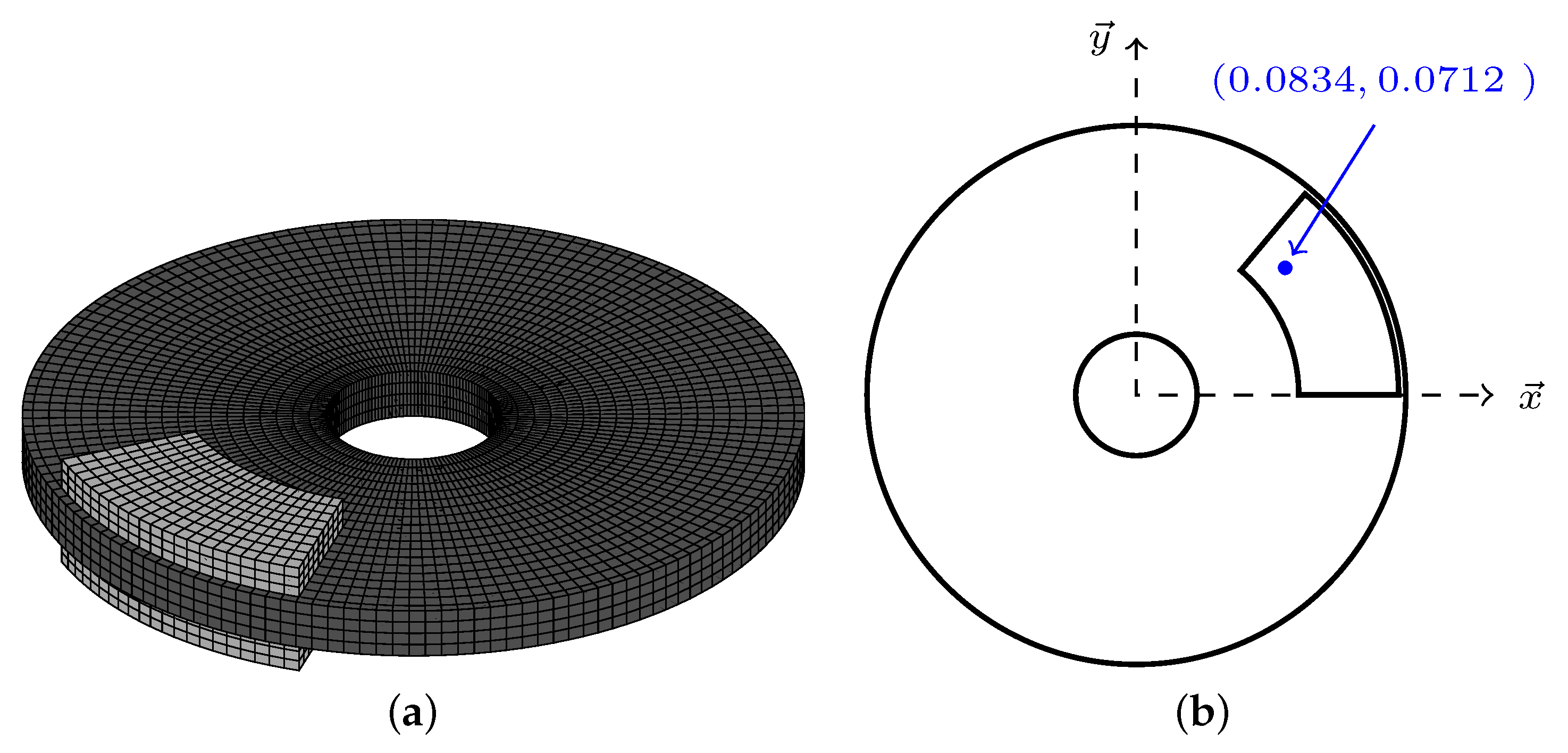
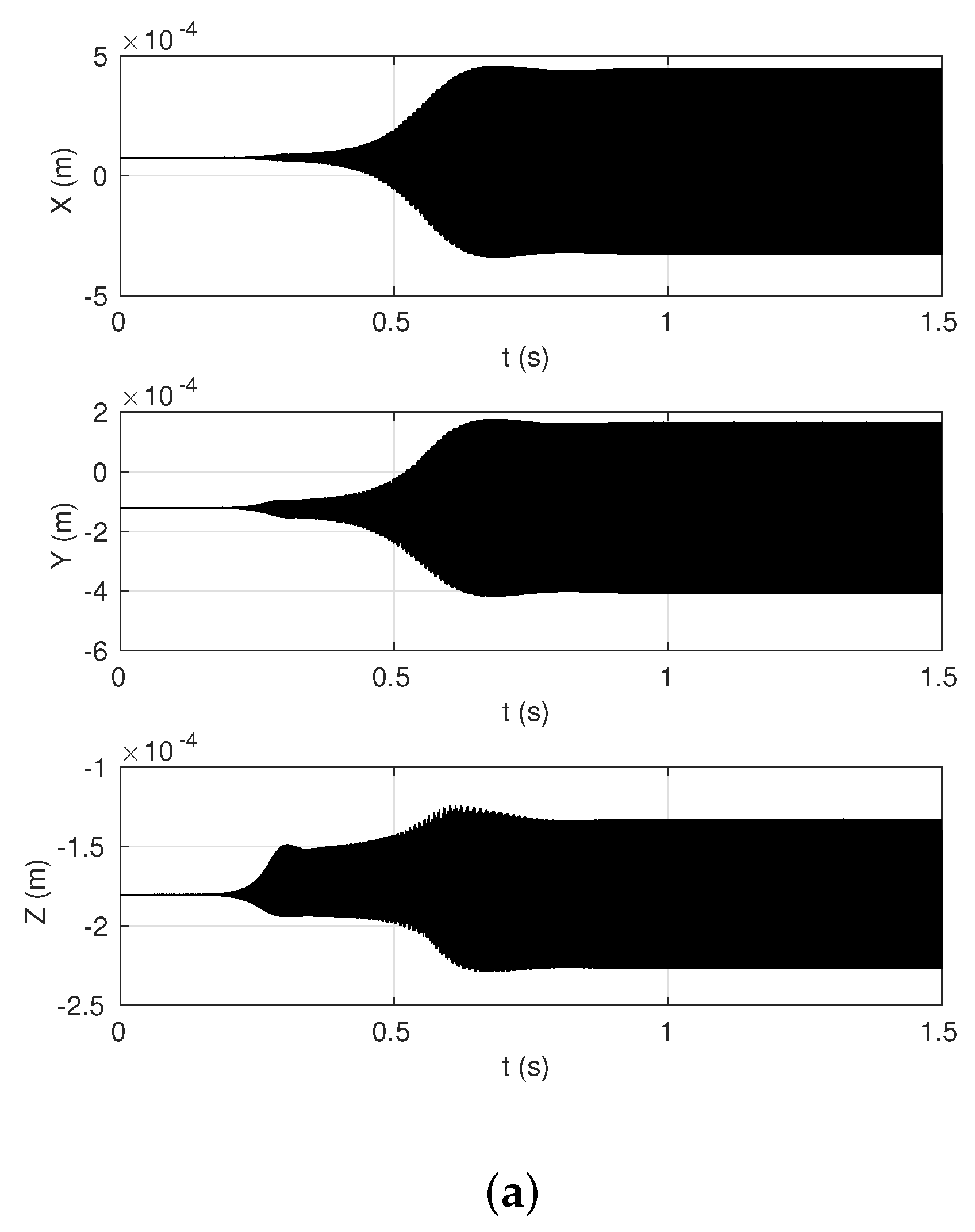
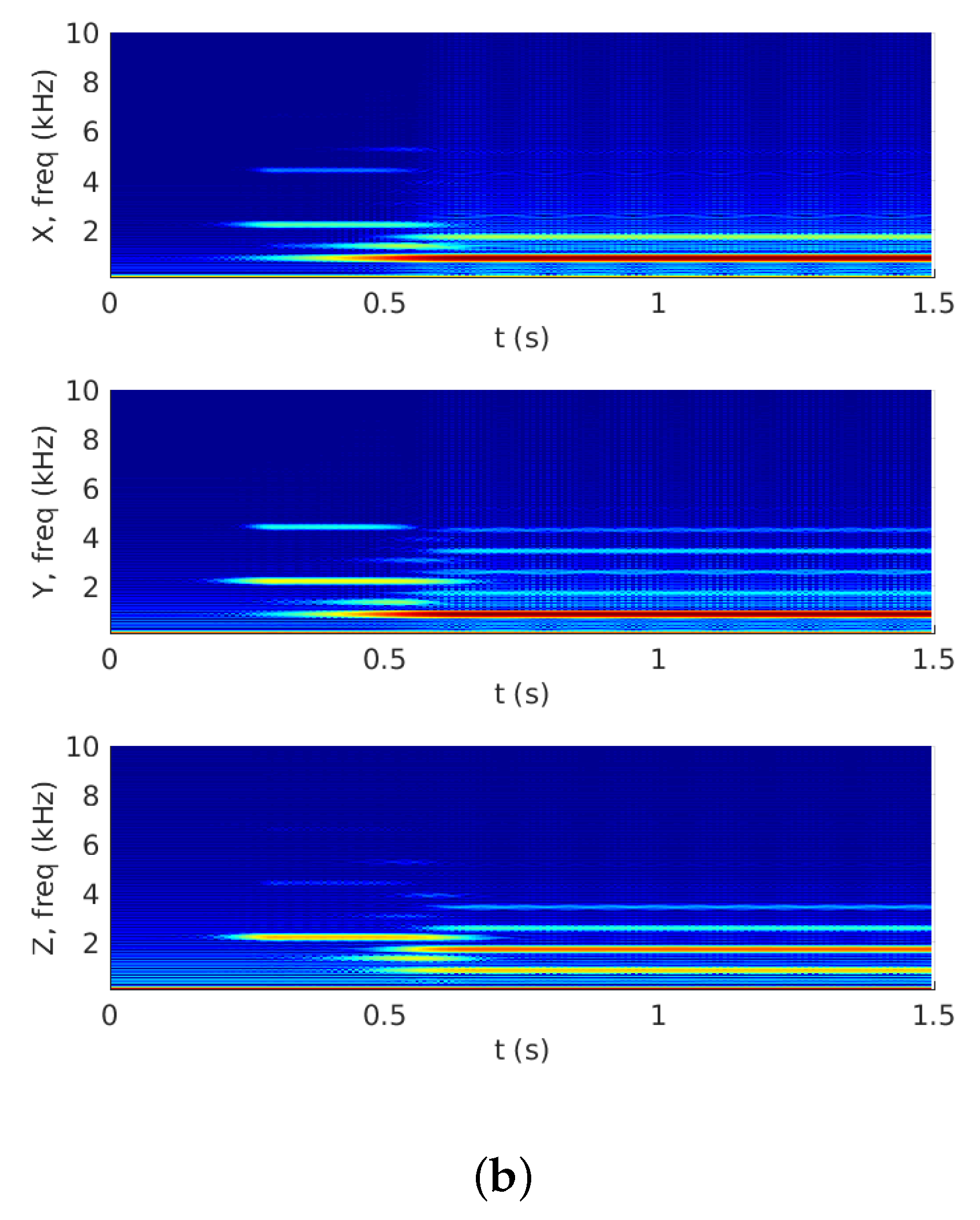
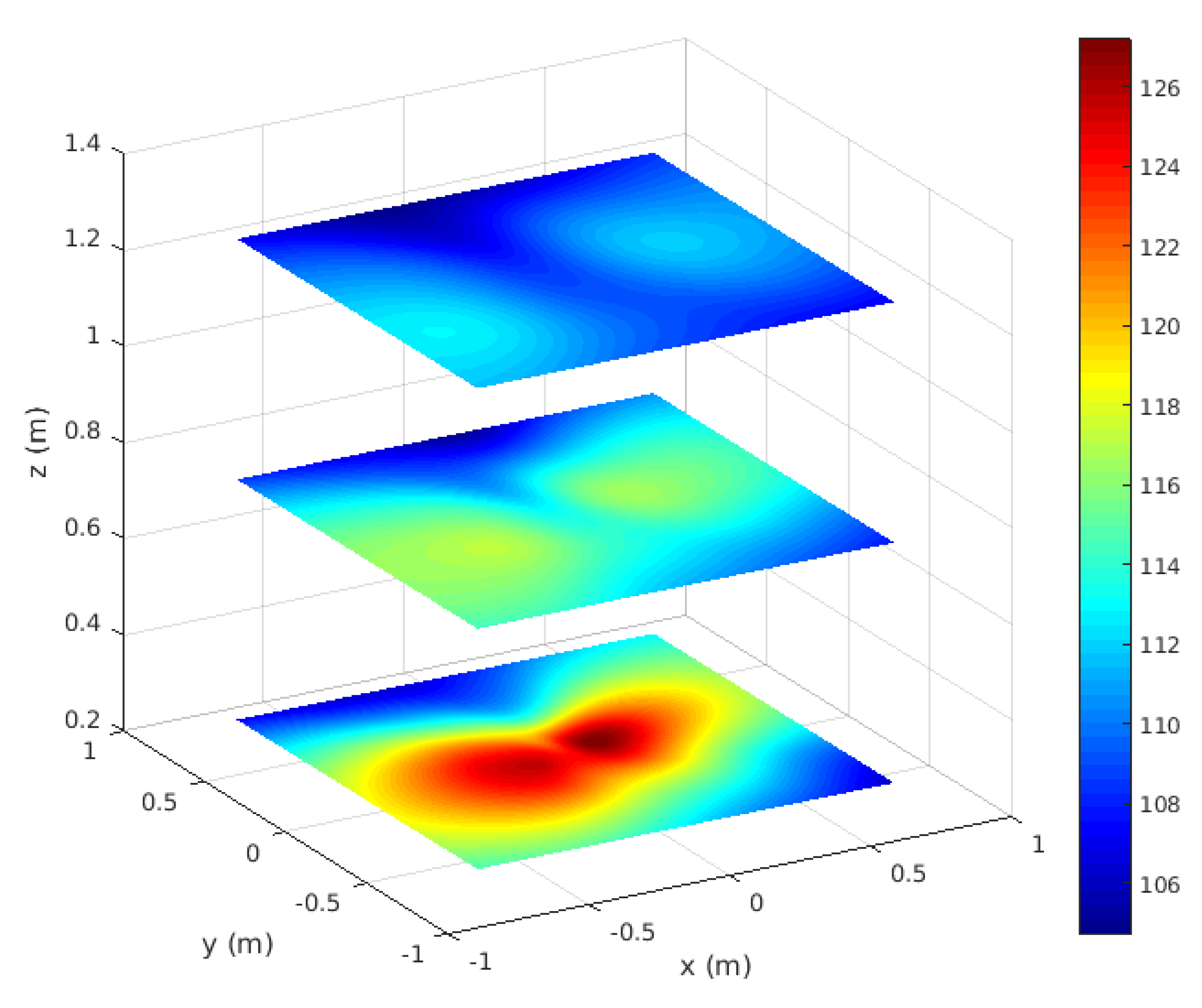
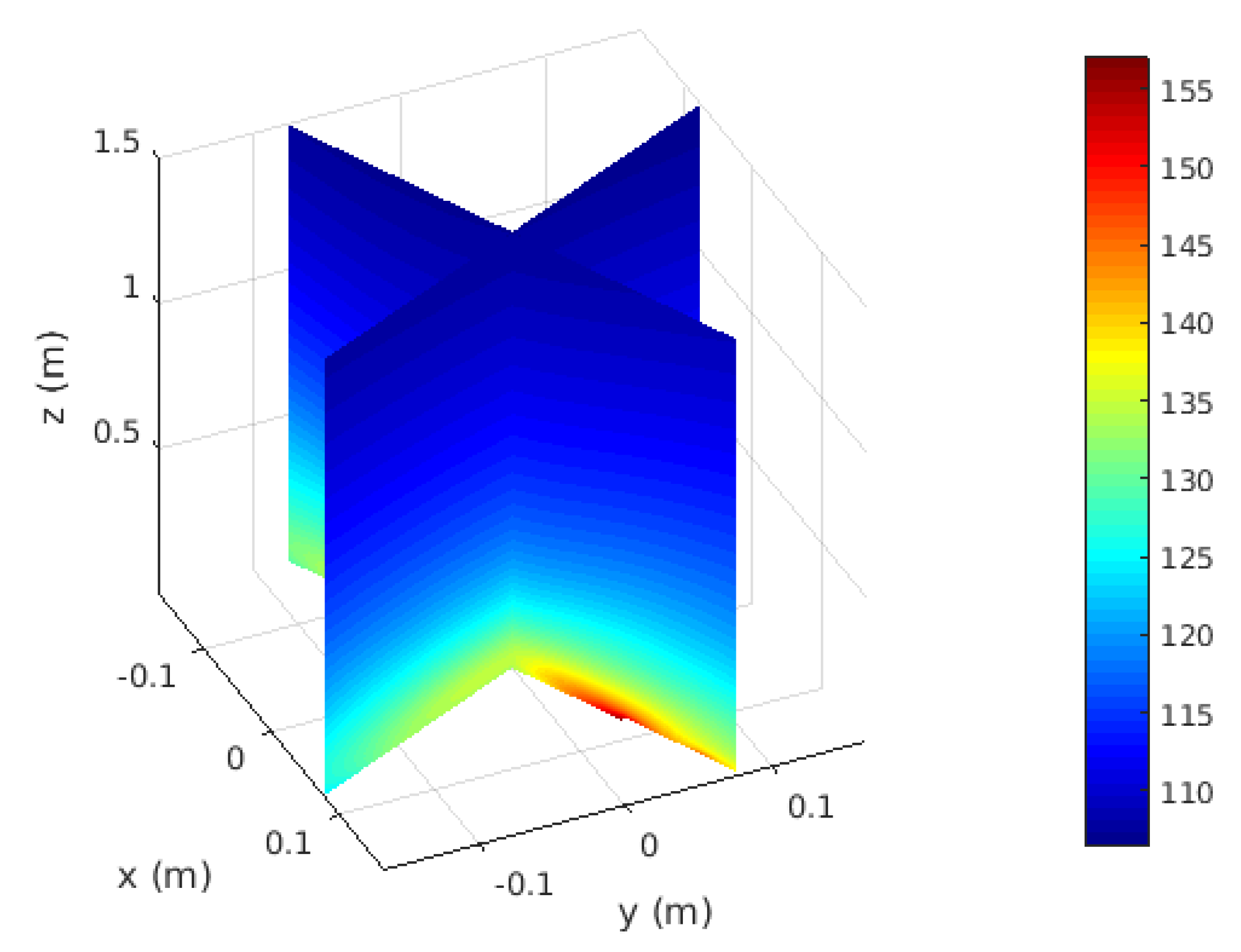
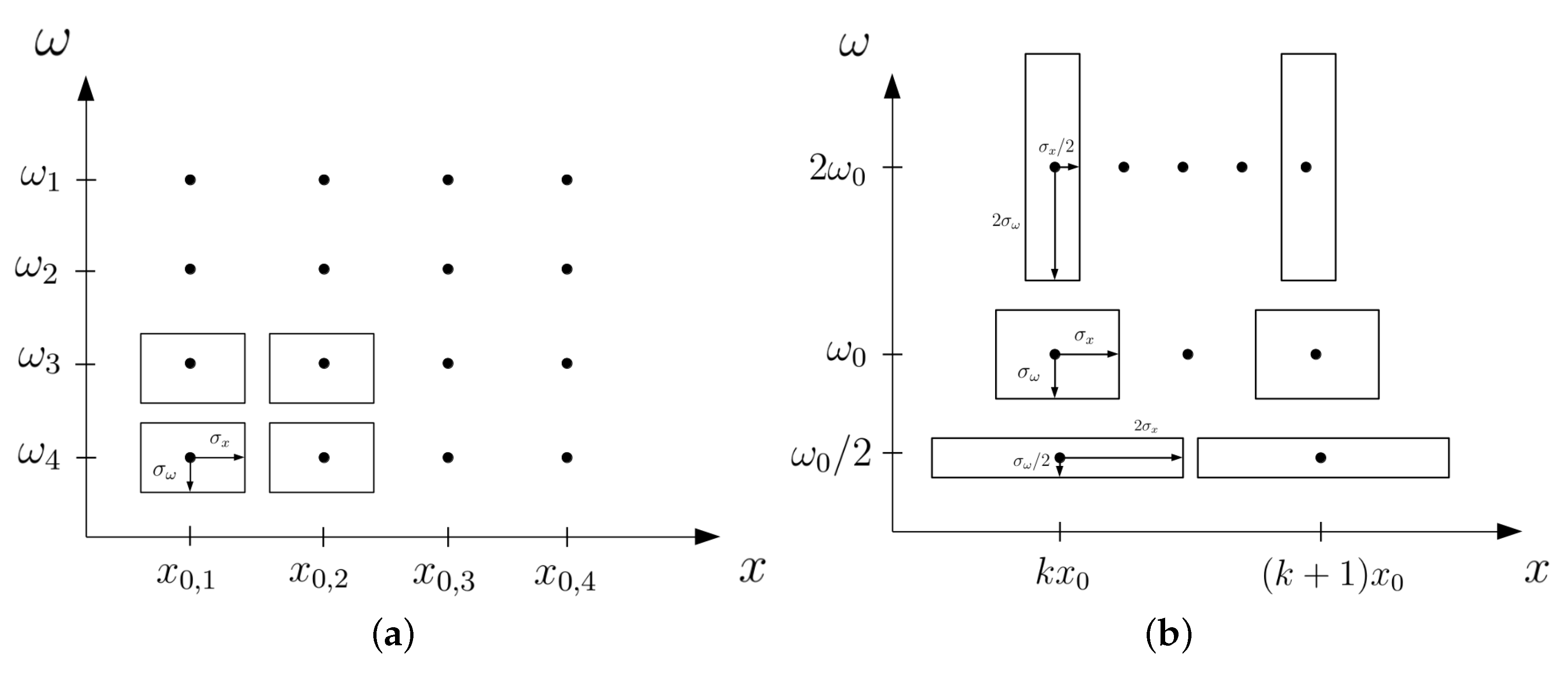
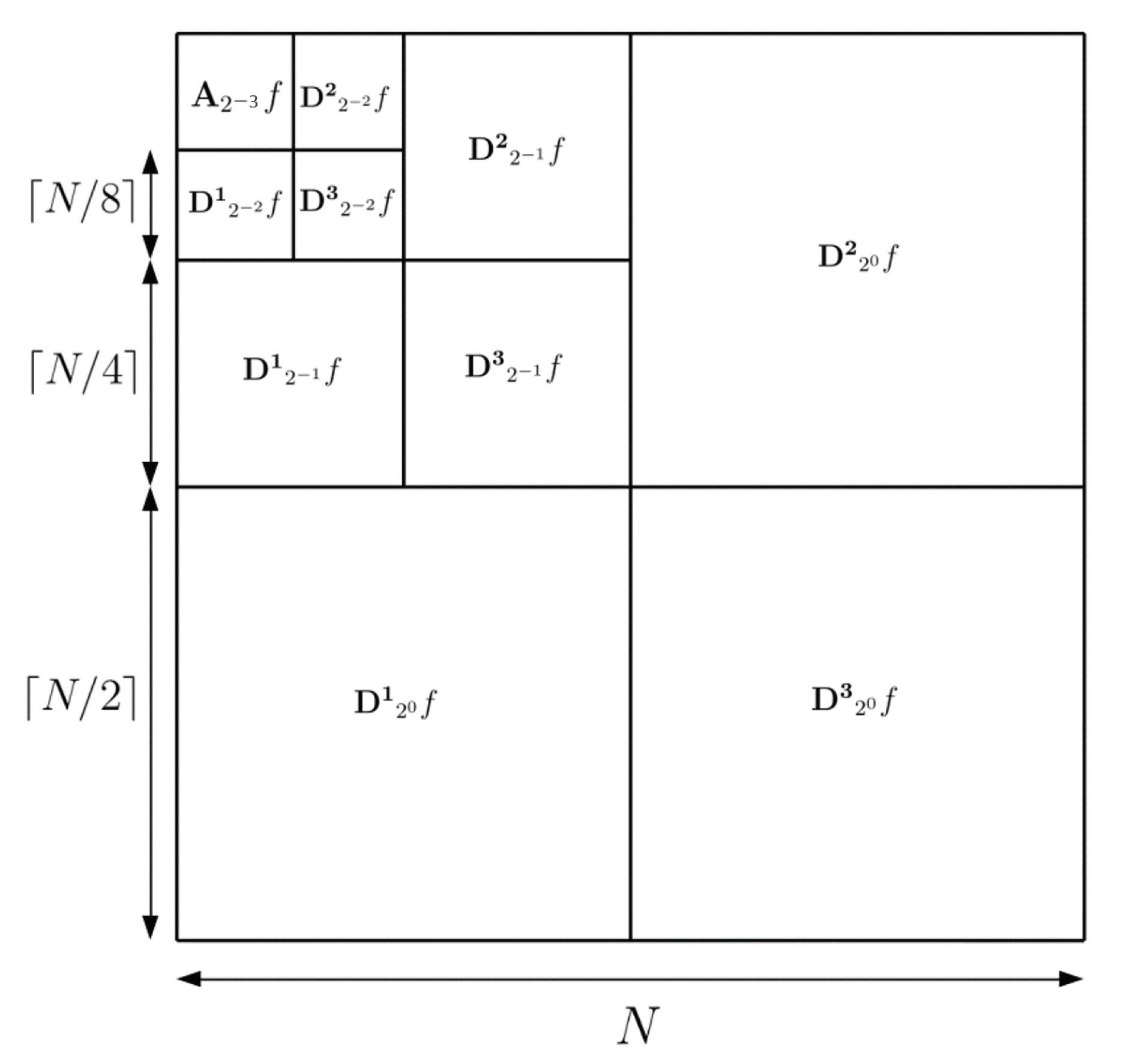
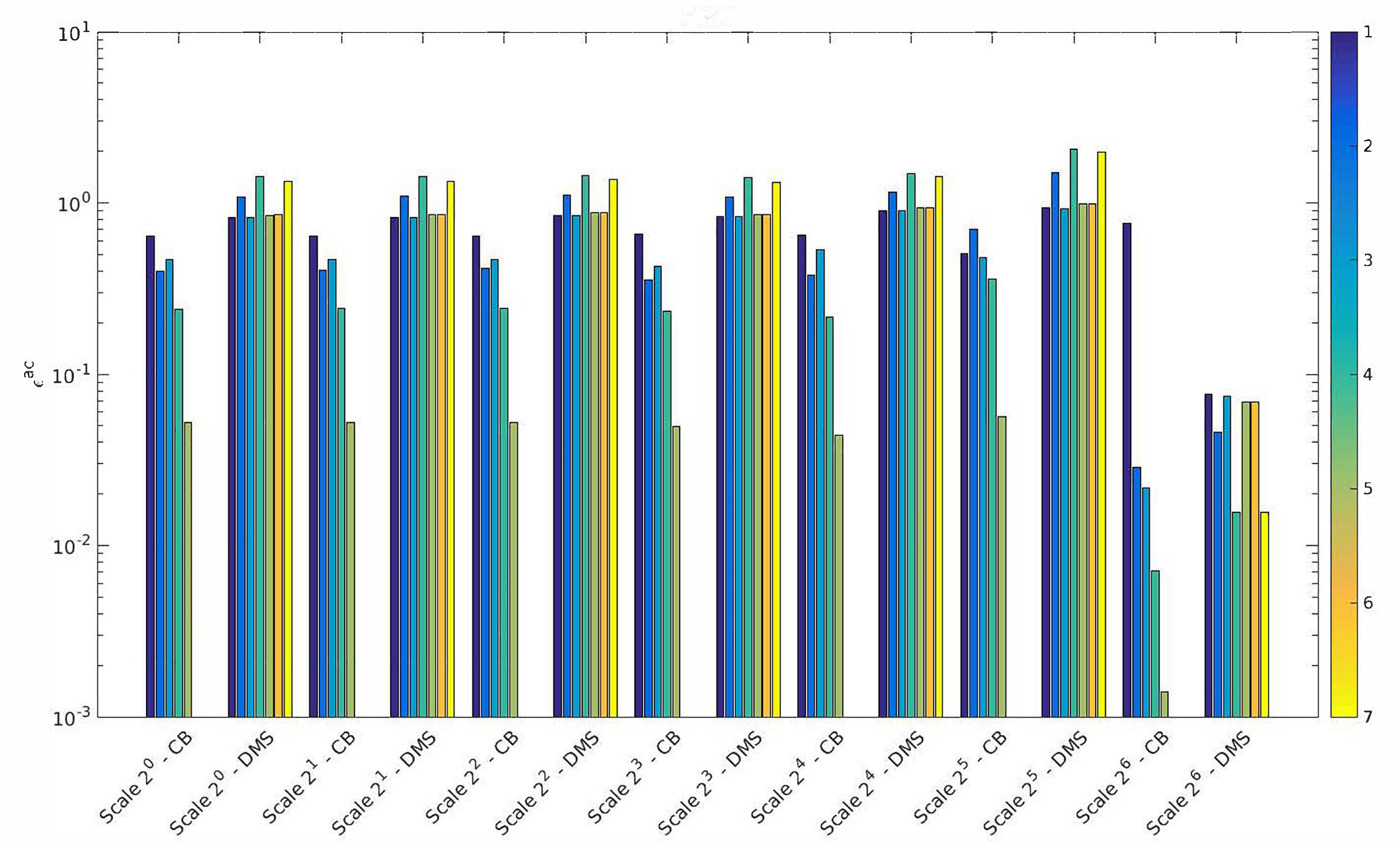




| Parameter | Unit | Disc | Pads |
|---|---|---|---|
| Thickness (Z direction) | m | ||
| Outer radius | m | ||
| Inner radius | m | ||
| Young modulus E | Pa | × | 2 × |
| Poisson’s ratio | |||
| Density | kg·m | 7200 | 2500 |
| Friction Coefficient | Number of Instabilities | Frequency of Unstable Mode(s) |
|---|---|---|
| 0 | - | |
| 1 | = 857 Hz | |
| 2 | = 857 Hz and = 2223 Hz |
Publisher’s Note: MDPI stays neutral with regard to jurisdictional claims in published maps and institutional affiliations. |
© 2020 by the authors. Licensee MDPI, Basel, Switzerland. This article is an open access article distributed under the terms and conditions of the Creative Commons Attribution (CC BY) license (http://creativecommons.org/licenses/by/4.0/).
Share and Cite
Corradi, G.; Sinou, J.-J.; Besset, S. Prediction of Squeal Noise Based on Multiresolution Signal Decomposition and Wavelet Representation—Application to FEM Brake Systems Subjected to Friction-Induced Vibration. Appl. Sci. 2020, 10, 7418. https://doi.org/10.3390/app10217418
Corradi G, Sinou J-J, Besset S. Prediction of Squeal Noise Based on Multiresolution Signal Decomposition and Wavelet Representation—Application to FEM Brake Systems Subjected to Friction-Induced Vibration. Applied Sciences. 2020; 10(21):7418. https://doi.org/10.3390/app10217418
Chicago/Turabian StyleCorradi, Grégoire, Jean-Jacques Sinou, and Sébastien Besset. 2020. "Prediction of Squeal Noise Based on Multiresolution Signal Decomposition and Wavelet Representation—Application to FEM Brake Systems Subjected to Friction-Induced Vibration" Applied Sciences 10, no. 21: 7418. https://doi.org/10.3390/app10217418





